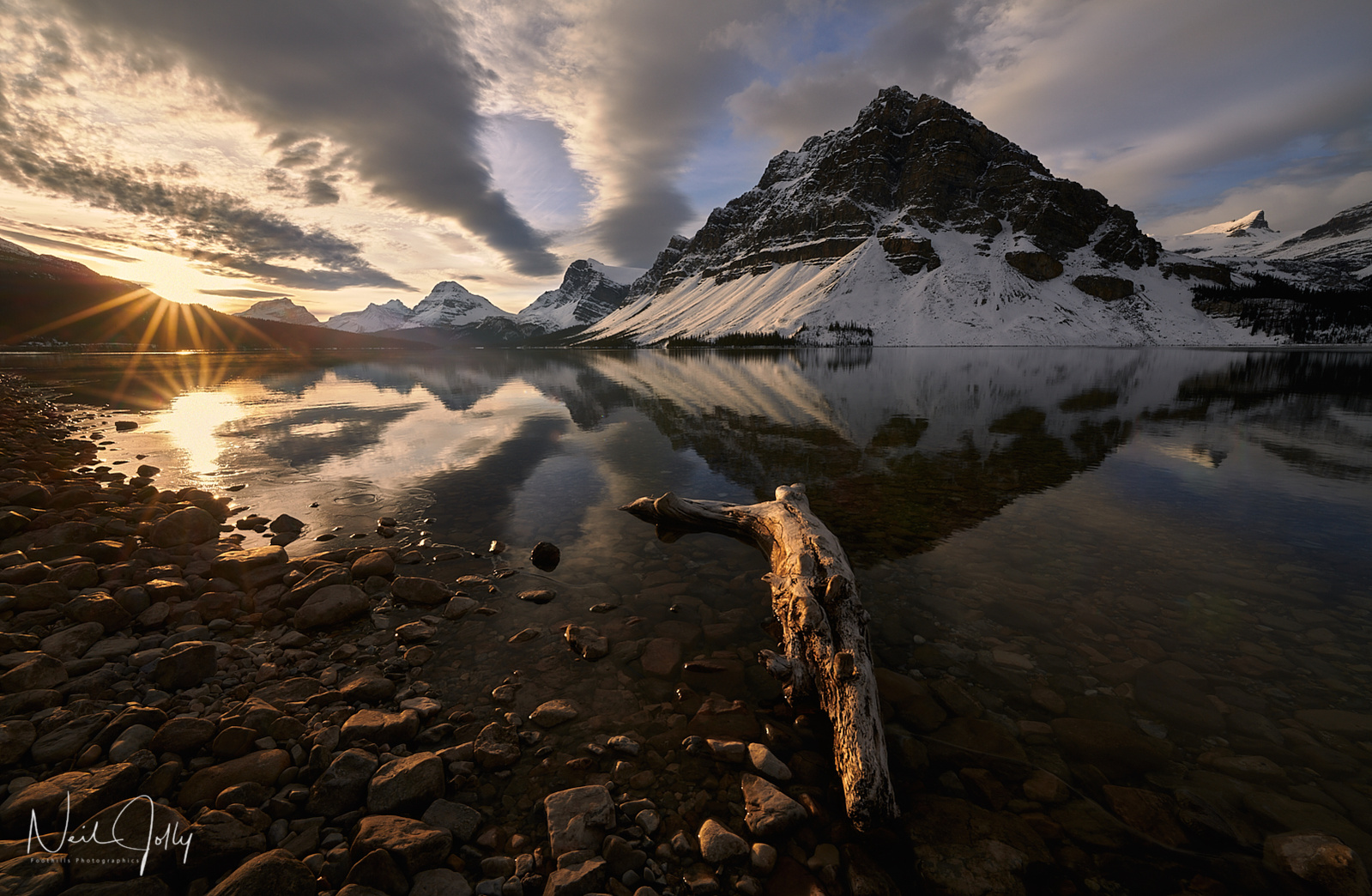The Art of Composition Part II
February 9, 2019One of my biggest inspirations was Ansel Adams. Ansel said many things about photography but one of his best in my opinion is the following quote: “The single most important component of a camera is the twelve inches behind it.” – Ansel Adams. There’s no doubt about it if the photographer doesn’t have what it takes no amount of equipment is going to fix the photograph. Composition is, I believe, one of the most important elements of a good photograph. The composition is where much of the photographer’s personality comes out in the image. A poorly composed image that is technically perfect in all other aspects is simply a snapshot.
In my last blog I touched on identifying your subject, leading lines, foreground interest, and depth of field. Today we’ll go a bit deeper into the subject and introduce balance, contrast, negative space, and point of view, as well. The image, above of Mount Chephren, uses leading lines, lots of depth of field, foreground interest, and balance to grab the viewer’s attention. The main subject in this image is Mount Chephren, with the secondary subject, or foreground interest, being the driftwood frozen into the ice. The driftwood is nicely situated towards the right side of the frame, which offsets the bulk of Mount Chephren, nearer to the left of the frame, and also serves as a leading line. If the driftwood was centered the image would feel off balance and would lose some of it’s interest. I like my images to feel as though you can walk into the frame. This is achieved using a combination of lots of depth of field, and a natural point of view.
The image of Mount Chephren was taken from a standing point of view. The viewer feels as though they are standing on the lakeshore looking out across the ice with the Mount Chephren dominating the view. One of the reasons that Mount Chephren catches the eye is the light. The eye is naturally drawn to the brighter areas of the image. While the sheer size of Mount Chephren is eye catching it would not draw the eye near as much if it was not well lit by the rising sun. I will deal more with the subject of contrast a bit later. Above is an image of Crowfoot Peak at Bow Lake. This image was taken from a lower point of view to exaggerate the foreground driftwood that draws the eye into the scene. In this image we have a much different balance. Crowfoot peak is a large peak that fills the right upper quadrant of the image, and is more subtly lit by the sun, compared to the image of Mount Chephren. In the Bow Lake scene the weight of Bow Peak is balanced by the dark, heavy, shoreline at lower left, and is further offset by the dark upper left quadrant of the sky above the sun. The bright area of the starburst sun is also offset by the well lit Saint Nicholas Peak at upper right.
The image above, of Castle Mountain in the morning sun, uses contrast to draw the eye of the viewer. Castle Mountain is the brightest element in the image and the eye is soon drawn to the mountain. The contrast between the dark areas, and the light areas, is what leads the eye in this image. The darker areas, combined with the soft focus effect from the ice fog, create an area of negative space, where there’s little interest for the eye, which draws the viewer to the the areas with more interest. The eye goes initially to the foreground snow patch but there’s little there to capture the viewer’s attention, and the eye moves on to the mountain. The snow patch that’s in focus serves to add some depth to the image. Since photography is a two dimensional medium you have to use optical illusion to simulate depth.
The Autumn shot above uses a shallow depth of field to isolate the subject. Here we have two leaves lying on a fallen tree that are the main subject. If all the grass were in focus here it would be a challenge to determine what the subject even is. With a little creative use of a wide aperture on a moderately wide angle lense we have created an area of negative space where there’s little for the eye to see. The soft focus, coloured grasses, make a nice backdrop for the log and the leaves, while the viewers imagination can create context for the scene. In this Autumn shot we have no idea where the image was taken. This leaves the viewer to imagine the overall scene. This is referred to as viewer engagement. Getting the viewer’s imagination working is a desirable element to add to an image.
Above we see an image of mixed grassland, and woodland, in Autumn. The path makes a great leading line that pulls you into the image. What is the subject here though? The Autumn colour is nice but the trail leads the eye past the trees and into the mist. This is what I call a concept image where the viewers imagination is left to decide where the path leads to, and what the fog is obscuring. The idea of the shot is to engage the viewer and encourage them to take a walk into the fog and discover what is out there. So take a hike folks and we’ll see you next week!




